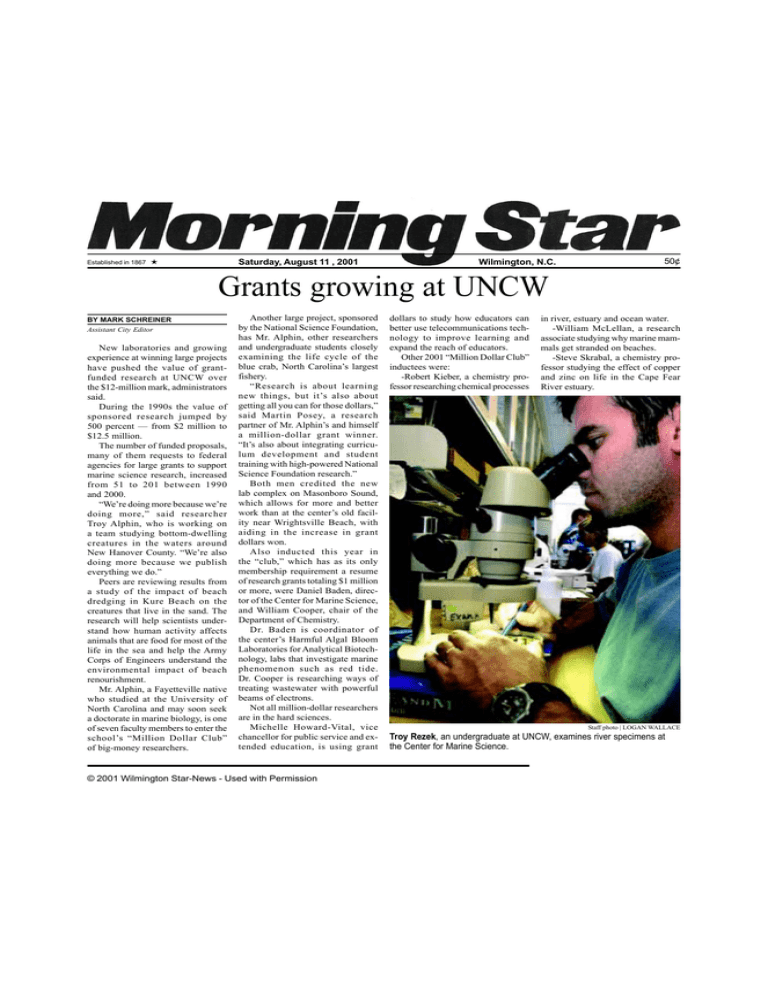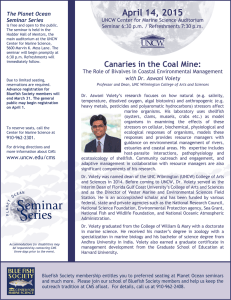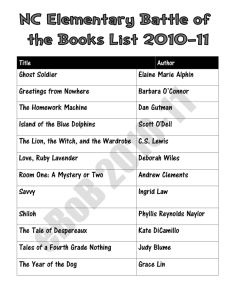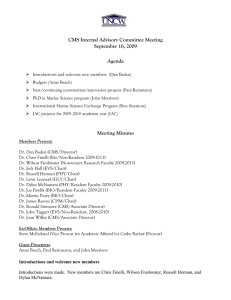Grants growing at UNCW
advertisement

Saturday, August 11 , 2001 Established in 1867 Wilmington, N.C. 50¢ Grants growing at UNCW BY MARK SCHREINER Assistant City Editor New laboratories and growing experience at winning large projects have pushed the value of grantfunded research at UNCW over the $12-million mark, administrators said. During the 1990s the value of sponsored research jumped by 500 percent — from $2 million to $12.5 million. The number of funded proposals, many of them requests to federal agencies for large grants to support marine science research, increased from 51 to 201 between 1990 and 2000. “We’re doing more because we’re doing more,” said researcher Troy Alphin, who is working on a team studying bottom-dwelling creatures in the waters around New Hanover County. “We’re also doing more because we publish everything we do.” Peers are reviewing results from a study of the impact of beach dredging in Kure Beach on the creatures that live in the sand. The research will help scientists understand how human activity affects animals that are food for most of the life in the sea and help the Army Corps of Engineers understand the environmental impact of beach renourishment. Mr. Alphin, a Fayetteville native who studied at the University of North Carolina and may soon seek a doctorate in marine biology, is one of seven faculty members to enter the school’s “Million Dollar Club” of big-money researchers. Another large project, sponsored by the National Science Foundation, has Mr. Alphin, other researchers and undergraduate students closely examining the life cycle of the blue crab, North Carolina’s largest fishery. “Research is about learning new things, but it’s also about getting all you can for those dollars,” said Martin Posey, a research partner of Mr. Alphin’s and himself a million-dollar grant winner. “It’s also about integrating curriculum development and student training with high-powered National Science Foundation research.” Both men credited the new lab complex on Masonboro Sound, which allows for more and better work than at the center’s old facility near Wrightsville Beach, with aiding in the increase in grant dollars won. Also inducted this year in the “club,” which has as its only membership requirement a resume of research grants totaling $1 million or more, were Daniel Baden, director of the Center for Marine Science, and William Cooper, chair of the Department of Chemistry. Dr. Baden is coordinator of the center’s Harmful Algal Bloom Laboratories for Analytical Biotechnology, labs that investigate marine phenomenon such as red tide. Dr. Cooper is researching ways of treating wastewater with powerful beams of electrons. Not all million-dollar researchers are in the hard sciences. Michelle Howard-Vital, vice chancellor for public service and extended education, is using grant © 2001 Wilmington Star-News - Used with Permission dollars to study how educators can better use telecommunications technology to improve learning and expand the reach of educators. Other 2001 “Million Dollar Club” inductees were: -Robert Kieber, a chemistry professor researching chemical processes in river, estuary and ocean water. -William McLellan, a research associate studying why marine mammals get stranded on beaches. -Steve Skrabal, a chemistry professor studying the effect of copper and zinc on life in the Cape Fear River estuary. Staff photo | LOGAN WALLACE Troy Rezek, an undergraduate at UNCW, examines river specimens at the Center for Marine Science.




